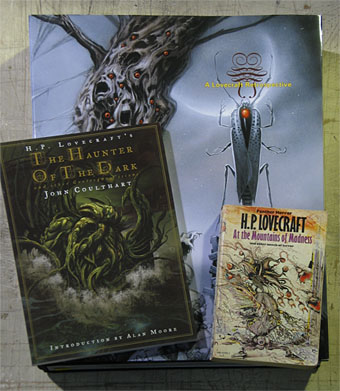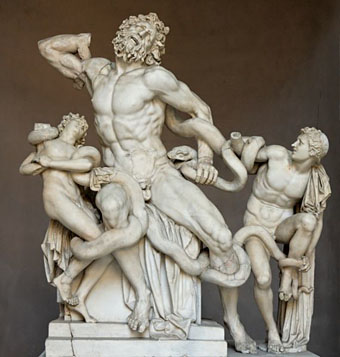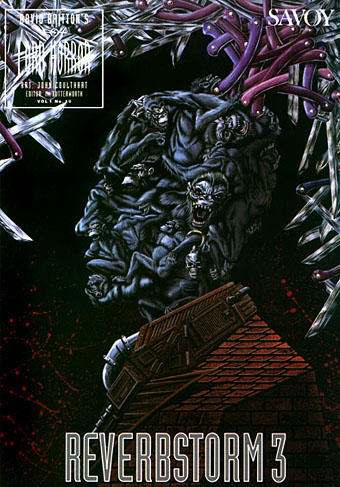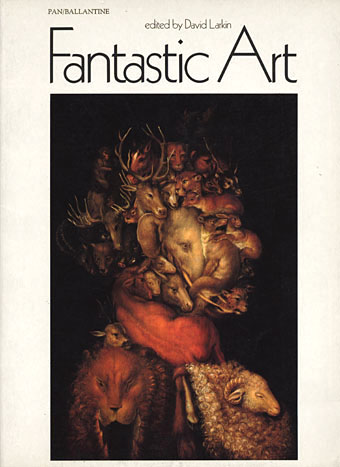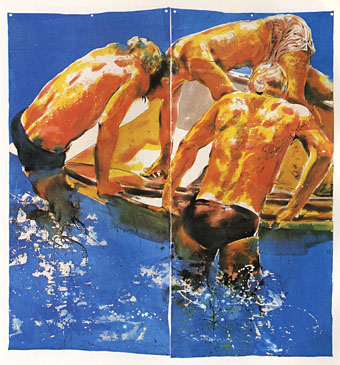So it arrived at last, yesterday in fact, the colossal volume that is A Lovecraft Retrospective: Artists Inspired by HP Lovecraft from Centipede Press. Calling this a book is like calling the Great Pyramid of Cheops a pile of stones, technically accurate but the words somewhat fail to convey the existential reality. This is the heaviest book I’ve ever come across, 400 pages of heavy-duty art paper at BIG size. (Amazon gives the dimensions as 16.1 x 12.6 x 2.3 inches or 409 x 320 x 580 mm.) The photo above shows the scale beside an old Mountains of Madness paperback (Ian Miller‘s cover art appears in full in the new book) and my own Haunter of the Dark collection. The cover art is by Michael Whelan, a detail from his wonderful 1981 HPL panoramas.
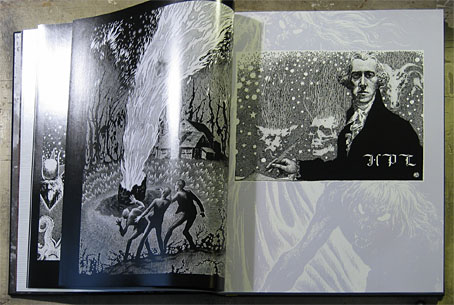
The Virgil Finlay section showing The Colour Out of Space and his definitive Lovecraft portrait.
The range of contributors past and present includes JK Potter, HR Giger, Raymond Bayless, Ian Miller, Virgil Finlay, Lee Brown Coye, Hannes Bok, Rowena Morrill, Bob Eggleton, Allen Koszowski, Mike Mignola, Howard V. Brown, Michael Whelan, Tim White, Frank Frazetta, John Holmes, Harry O. Morris, Murray Tinkelman, Gabriel, Don Punchatz, Helmut Wenske, John Stewart, Thomas Ligotti and John Jude Palencar. The introduction is by Harlan Ellison and there’s an afterword by Thomas Ligotti. Many pages fold out to reveal spreads like the Giger ones below. Print quality is exceptional, of course, but then ladling the superlatives is pointless when it’s obvious this is a sui generis masterpiece of Lovecraftian art. Naturally I’m very happy indeed to be a part of it.

